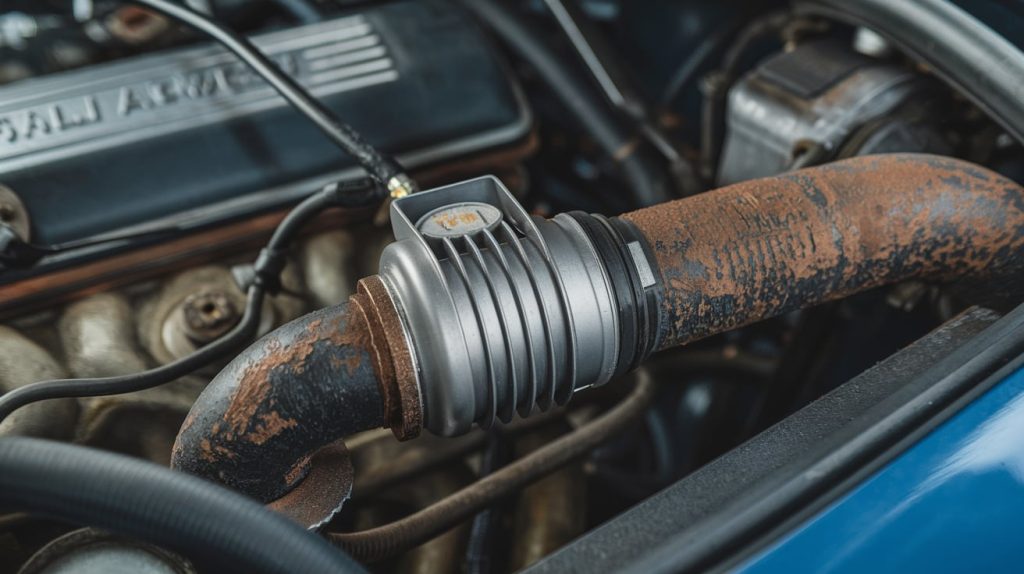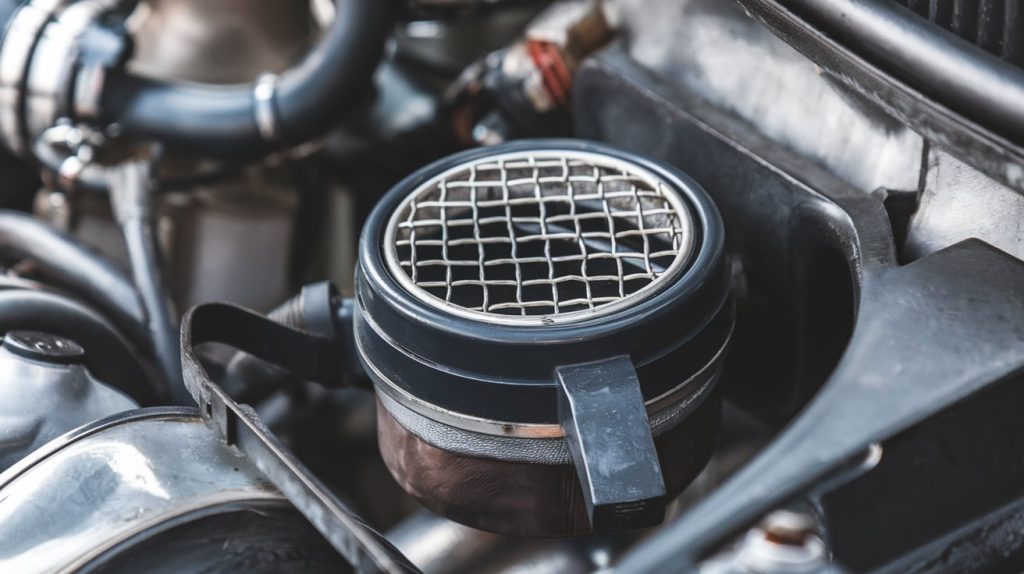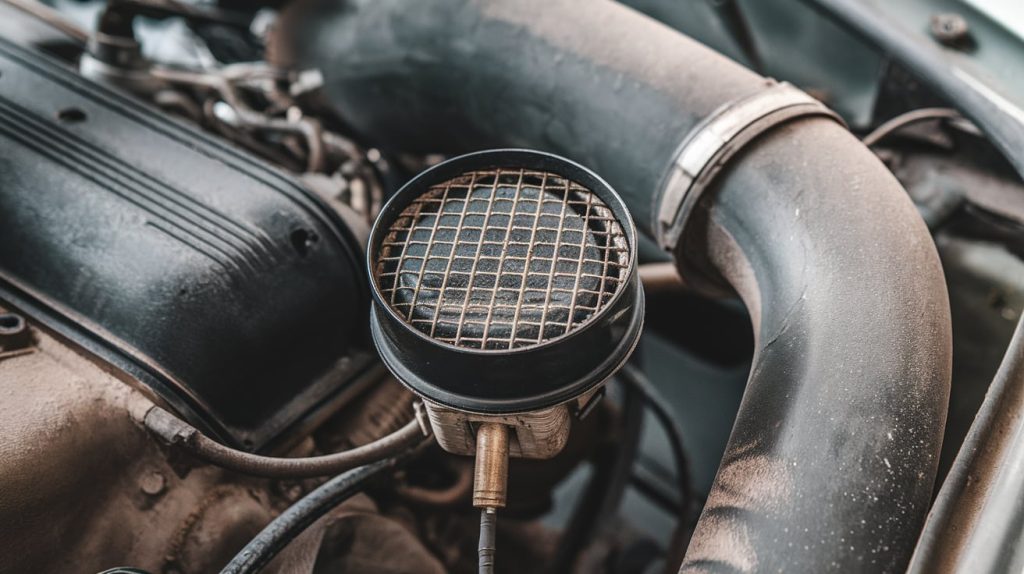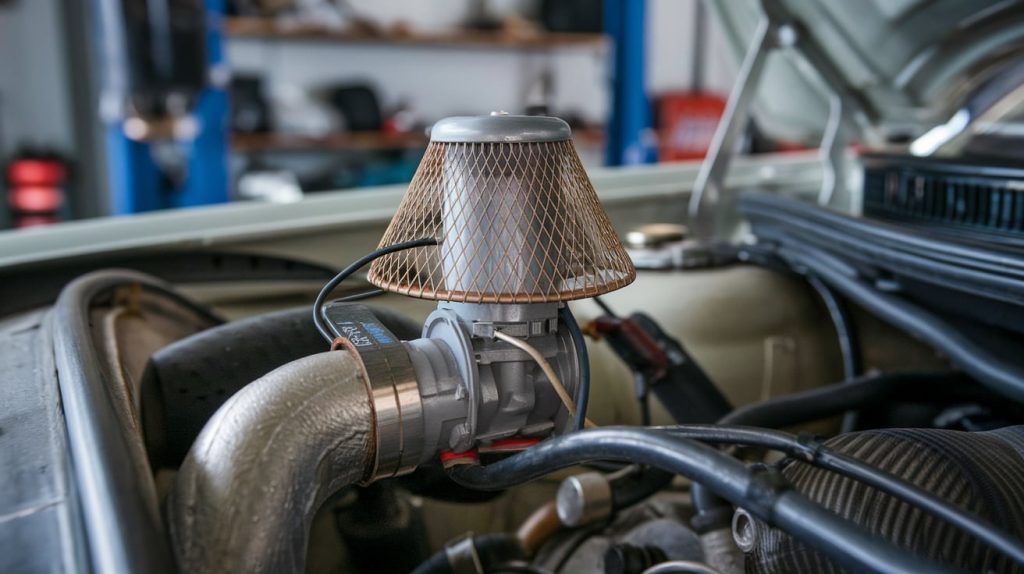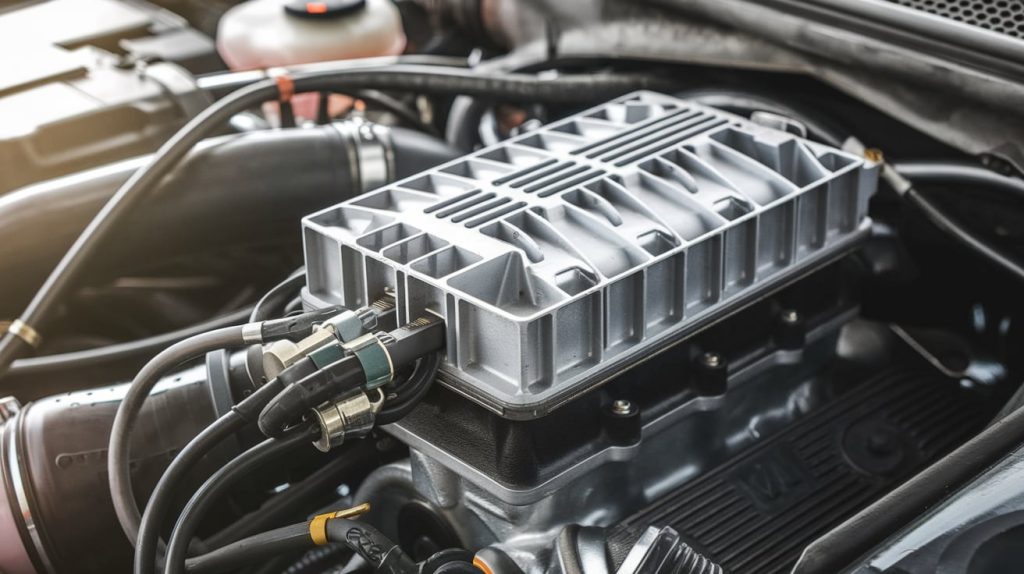Ever wondered how your car maintains the perfect air-fuel balance? The mass air flow sensor plays a crucial role in ensuring optimal engine performance by measuring the air entering the engine. A faulty MAF sensor can lead to poor fuel efficiency, rough idling, and even engine stalling. Learn how this essential component works, common signs of failure, and why regular maintenance of your mass air flow sensor is vital for your vehicle’s health.
What is a Mass Air Flow Sensor?
A Mass Air Flow sensor is a small but essential part of your car’s engine system. Its job is to measure the amount of air entering the engine. This information helps the car’s computer adjust the fuel mixture for smooth performance and better fuel efficiency. Without a properly working MAF sensor, your car might struggle with acceleration, use more fuel, or even stall.
Types of MAF sensors
There are two main types of Mass Air Flow sensors commonly used in vehicles:
- Hot Wire MAF Sensor
- This is the most common type of MAF sensor. It uses a thin, heated wire to measure airflow. As air passes through, it cools the wire, and the sensor calculates the amount of air based on how much electricity is needed to keep the wire hot. These sensors are precise and efficient.
- Vane Meter MAF Sensor
- This older type of sensor uses a spring-loaded flap to measure the air entering the engine. The flap’s movement corresponds to the amount of air, which the sensor converts into a signal for the car’s computer. While reliable, they are less common in modern cars due to their bulkier design.
- Cold Wire Mass Air Flow Sensor
- Though less common, this sensor uses a similar concept to the hot wire but operates at cooler temperatures. It’s designed for specific vehicles that require unique airflow measurements.
- Frequency-Based MAF Sensor
- Some vehicles use frequency-based sensors that send electrical signals as the air passes through. The frequency of the signal corresponds to the airflow rate. These are more durable and often found in advanced systems.
Each type of Mass Air Flow sensor serves the same purpose but operates differently to suit various engine designs and requirements.
How Does an MAF Sensor Work?
The Mass Air Flow sensor is a critical component that helps your car’s engine run smoothly. It measures the amount of air entering the engine and sends this information to the car’s computer, also known as the Engine Control Unit (ECU). This allows the ECU to adjust the fuel mixture for optimal performance and efficiency.
Here’s how a MAF sensor works:
- It uses a tiny wire or flap that reacts to the airflow passing through.
- The sensor calculates how much air is entering based on changes in temperature or electrical signals.
- This data helps the ECU determine the right amount of fuel to inject into the engine, ensuring smooth combustion.
- A properly functioning Mass Air Flow ensures better fuel efficiency, smooth acceleration, and reduced emissions.
By constantly monitoring the airflow, the MAF sensor plays a vital role in keeping your car’s engine in top condition. Without it, your car may face performance issues like stalling or excessive fuel consumption.
Is Your MAF Sensor Not Working?
Is your car showing unusual behavior like poor performance or rough idling? It might be a sign that your Mass Air Flow sensor isn’t working properly. The MAF sensor plays a key role in managing the air-fuel balance in your engine, and when it malfunctions, your car can struggle to perform at its best.
A faulty MAF sensor can lead to issues like engine stalling, increased fuel consumption, or even difficulty starting the vehicle. If you’re noticing these problems, it’s time to check whether your Mass Air Flow sensor is causing the trouble. Addressing the issue early can prevent further damage and keep your car running smoothly.
Signs of a Faulty MAF Sensor
A faulty Mass Air Flow sensor can disrupt your car’s performance in several ways. Recognizing the signs early can save you from expensive repairs. Here are the most common symptoms of a failing MAF sensor:
- Check Engine Light Turns On: A malfunctioning MAF sensor often triggers the check engine light. This happens because the car’s computer receives incorrect airflow readings, leading to a warning signal.
- Poor Fuel Economy: If the MAF sensor sends inaccurate data, the engine might use more fuel than necessary. This results in poor fuel efficiency and higher trips to the gas station.
- Engine Stalling or Hesitation: A bad Mass Air Flow sensor can cause the engine to stall or hesitate, especially during acceleration. This occurs when the air-fuel mixture is unbalanced.
- Rough Idling: When idling, your car may feel shaky or uneven if the MAF sensor isn’t working correctly.
- Difficulty Starting the Engine: If the airflow data is wrong, it can make starting your car challenging. The engine may struggle to get the correct fuel mix needed to fire up.
- Reduced Power and Performance: A failing Mass Air Flow sensor can cause a noticeable drop in power, making it hard to accelerate smoothly or climb hills.
- Increased Exhaust Emissions: A bad MAF sensor can lead to an improper air-fuel mix, resulting in higher emissions and potentially causing your vehicle to fail an emissions test.
If you notice any of these symptoms, it’s essential to address the issue promptly. A faulty Mass Air Flow sensor not only affects your car’s performance but can also damage other engine components if left unchecked. Regular maintenance and timely repairs can keep your vehicle running smoothly and efficiently.
How to Diagnose MAF Sensor Problems
Diagnosing issues with your vehicle’s Mass Air Flow sensor is crucial for maintaining optimal engine performance. Here’s a comprehensive guide to help you identify and address potential problems:
Retrieve Diagnostic Trouble Codes (DTCs)
- Use an OBD-II scanner to access the vehicle’s computer system and extract any stored trouble codes. Codes such as P0100 to P0104, P0171, and P0174 often indicate MAF sensor-related issues.
Interpret Specific Codes
- P0100-P0104: These codes signify malfunctions in the Mass Air Flow sensor circuit, ranging from general faults to specific issues like low or high input signals.
- P0171 and P0174: These codes indicate that the engine is running lean, which can result from incorrect data from a faulty or dirty MAF sensor.
Conduct a Visual Inspection
- Sensor Examination: Inspect the MAF sensor for signs of dirt, debris or damage. Contaminants can hinder its functionality.
- Wiring and Connections: Check for frayed wires, loose connections or corrosion in the MAF sensor’s wiring harness, as these can disrupt accurate readings.
Test the MAF Sensor’s Output
- Voltage and Frequency Measurement: Utilize a multimeter to measure the sensor’s output voltage or frequency. Compare these readings with manufacturer specifications to determine if the sensor is operating correctly.
Inspect for Air Leaks
- Intake System Check: Examine the intake system for leaks that could allow unmetered air to enter, leading to erroneous MAF sensor readings.
Clean the MAF Sensor
- Debris Removal: If the sensor is dirty, use a specialized Mass Air Flow sensor cleaner to gently remove contaminants. Avoid touching the sensor elements directly to prevent damage.
By systematically following these steps, you can accurately diagnose and address MAF sensor problems, ensuring your vehicle operates efficiently and reliably.
How Much Does It Cost to Replace a Mass Air Flow Sensor in UAE?
Replacing a faulty Mass Air Flow sensor is essential to maintain your car’s performance and fuel efficiency. The cost of replacement can vary depending on your vehicle’s make, model, and the type of sensor required. Here’s a breakdown of the expected costs in the UAE:
- Cost of the MAF Sensor: The price of a new MAF sensor typically ranges from AED 400 to AED 1,200, depending on the car brand and sensor quality.
- Labor Charges: Professional installation at a trusted garage in the UAE generally costs around AED 150 to AED 400. The exact amount may vary based on the complexity of the replacement process.
- Total Replacement Cost: The overall cost to replace a MAF sensor in the UAE is usually between AED 550 and AED 1,600, including both parts and labor. If you’re weighing options, see why OEM car batteries and other genuine parts often save money long term.
- DIY Replacement Costs: If you’re experienced with car repairs, you can purchase the sensor and replace it yourself, saving on labor. However, this approach requires caution to avoid damaging the new sensor or other components.
Investing in a professional MAF sensor replacement ensures the job is done correctly and prevents further engine issues. At Auto Repair UAE, we offer reliable diagnostics and replacement services to keep your car running smoothly. Book your appointment today for expert care!
Replacing a Faulty MAF Sensor
A faulty Mass Air Flow sensor can cause issues like poor fuel economy, rough idling and engine stalling. Replacing it promptly is essential to restore your car’s performance and prevent further damage. At Auto Repair UAE, we follow a systematic approach to ensure the replacement is done efficiently and professionally.
Here are the steps we take:
- Thorough Diagnosis: Before replacing the MAF sensor, our technicians use advanced diagnostic tools to confirm the issue. This includes reading error codes and checking the sensor’s performance.
- Inspection of Surrounding Components: We inspect the air intake system, wiring and connectors for any additional problems, such as air leaks or damaged wires, to ensure the replacement resolves the issue completely.
- Selection of Quality Parts: We source only high-quality, manufacturer-approved MAF sensors that match your vehicle’s specifications. This ensures long-term reliability and compatibility.
- Safe Removal of the Faulty Sensor: The old MAF sensor is carefully removed to avoid damaging other components. This step includes disconnecting the battery to ensure safety during the process.
- Precise Installation: The new MAF sensor is installed securely, with all connections properly tightened. We also ensure the sensor is correctly aligned within the air intake system.
- Sensor Calibration and Testing: After installation, we calibrate the new sensor if necessary and run a series of tests. This includes checking airflow data, fuel efficiency and engine performance to verify everything is functioning perfectly.
- Final Quality Check: Before returning your vehicle, we conduct a final inspection to ensure all systems are working as they should, giving you peace of mind.
Replacing a faulty Mass Air Flow sensor is vital for maintaining your car’s performance and efficiency. At Auto Repair UAE, we prioritize quality and precision in every step of the process. Book an appointment with us today to experience hassle-free, professional service!
Book Your MAF Sensor Service Today
Don’t let a faulty Mass Air Flow sensor affect your car’s performance. Visit Auto Repair UAE in Dubai for expert diagnostics and reliable replacement services. Our skilled technicians are here to ensure your vehicle runs smoothly and efficiently.
Schedule your appointment now by contacting us or using our easy online booking system. Let us help you get back on the road with confidence!
Tips to Maintain Your MAF Sensor
Maintaining your vehicle’s Mass Air Flow sensor is essential for optimal engine performance and fuel efficiency. Here are some comprehensive tips to ensure your MAF sensor remains in top condition:
- Regularly Inspect & Replace the Air Filter
- A clean air filter prevents dirt and debris from reaching the MAF sensor, reducing the risk of contamination. Check your air filter during routine maintenance and replace it as recommended by your vehicle’s manufacturer.
- Use High-Quality Air Filters
- Invest in premium air filters that effectively trap contaminants. Avoid low-quality filters that may allow particles to pass through, potentially damaging the MAF sensor.
- Avoid Over-Oiling Aftermarket Air Filters
- If you use aftermarket oiled air filters, ensure they are not excessively oiled, as surplus oil can coat the MAF sensor and impair its functionality.
- Perform Periodic MAF Sensor Cleaning
- Over time, the MAF sensor can accumulate dirt and grime. Use a specialized MAF sensor cleaner to gently clean the sensor, following the manufacturer’s instructions. Avoid touching the sensor elements directly to prevent damage.
- Ensure Proper Installation of Air Intake Components
- Aftermarket devices or modifications in the air intake system can disrupt airflow and affect MAF sensor readings. Ensure all components are correctly installed and avoid unnecessary alterations.
- Monitor for Symptoms of MAF Sensor Issues
- Be vigilant for signs like decreased engine performance, rough idling or poor acceleration, which may indicate MAF sensor problems. Early detection can prevent more severe issues.
By adhering to these maintenance practices, you can prolong the lifespan of your MAF sensor, ensuring your engine operates efficiently and reliably.
A healthy Mass Air Flow sensor is vital for your car’s performance and fuel efficiency. From ensuring a balanced air-fuel mix to preventing engine troubles, its role cannot be overlooked. If you notice signs of a faulty sensor, don’t wait—it’s better to address the issue early than face costly repairs later. Trusting professionals for diagnostics and replacement ensures your vehicle gets expert care. At Auto Repair UAE, we’re here to help keep your car running smoothly and efficiently.
FAQs About Mass Air Flow Sensors
- What happens if I drive with a bad MAF sensor?
Driving with a faulty Mass Air Flow sensor can lead to several issues. Your car might experience reduced power, poor fuel efficiency, or even stalling in extreme cases. A bad MAF sensor can also damage other components, like the catalytic converter, due to an incorrect air-fuel mixture. It’s best to address the problem immediately to avoid costly repairs. - How long does an MAF sensor last?
An MAF sensor is designed to last between 100,000 to 150,000 miles under normal driving conditions. However, its lifespan depends on factors like air quality, maintenance habits, and the condition of the air filter. Regularly inspecting and cleaning the sensor can help extend its life. - Can I clean an MAF sensor myself?
Yes, you can clean an MAF sensor using a specialized MAF sensor cleaner. Make sure the engine is off and the sensor is completely cool before removing it. Spray the cleaner gently on the sensor’s delicate parts without touching them directly. Allow it to dry completely before reinstalling. If you’re unsure, it’s safer to seek professional assistance. - What are the common causes of Mass Air Flow sensor failure?
The most common reasons for MAF sensor failure are dirt or debris buildup, oil residue from air filters, or physical damage to the sensor. Electrical problems, such as corroded connectors or broken wires, can also cause the sensor to malfunction. - Can a dirty MAF sensor cause a check engine light?
Yes, a dirty or faulty MAF sensor can trigger the check engine light. When the sensor cannot provide accurate airflow data, the car’s computer detects the issue and activates the warning light. Diagnosing the problem with an OBD-II scanner can confirm if the MAF sensor is the cause. - Do all cars have an MAF sensor?
Most modern fuel-injected vehicles are equipped with an Maas Air Flow sensor. However, some older or less advanced vehicles might rely on other systems, such as a Manifold Absolute Pressure (MAP) sensor, to measure air intake. - What’s the difference between an MAF sensor and a MAP sensor?
Both the MAF sensor and MAP sensor help manage the engine’s air-fuel ratio, but they work differently. The MAF sensor measures the amount of air entering the engine, while the MAP sensor measures air pressure within the intake manifold. Some vehicles use both for more precise control, while others use only one. - Can a bad MAF sensor affect emissions?
Yes, a faulty MAF sensor can cause the engine to run too rich or too lean, leading to higher emissions. This could result in your car failing an emissions test and potentially harming the environment.
9. How do I know if I need to replace my MAF sensor or just clean it?
If your MAF sensor is dirty, cleaning it might resolve the issue. However, if cleaning doesn’t fix the problem or if the sensor is damaged, replacement is necessary. Signs of a damaged sensor include recurring error codes, physical damage, or no improvement after cleaning.

